Follow-up after tumor removal is essential
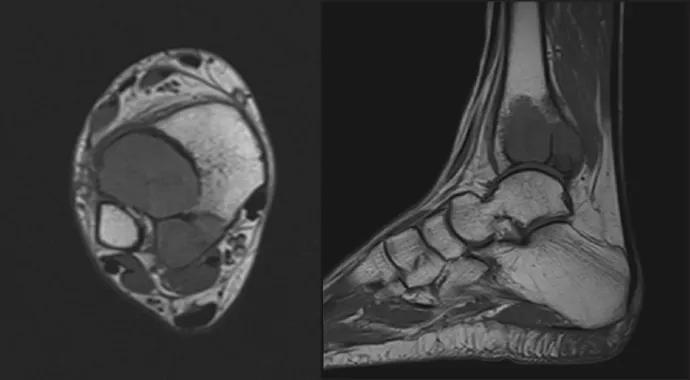
By Steven A. Lietman, MD, and Michael J. Joyce, MD
Cleveland Clinic is a non-profit academic medical center. Advertising on our site helps support our mission. We do not endorse non-Cleveland Clinic products or services. Policy
Giant cell tumor of bone is a nonmalignant but locally aggressive lesion. Vigilant follow-up after tumor removal is a cornerstone of management, as outlined in the below summary of factors guiding our approach to these lesions at Cleveland Clinic.
Giant cell tumor of bone most commonly occurs between ages 20 and 40. The bone lesion is typically located in the epiphysis and metaphysis of the distal femur or proximal tibia. Other common sites are the distal radius, proximal humerus, distal tibia and sacrum. The epicenter of the tumor is in the metaphysis, but the tumor crosses the epiphysis, usually to within 1.5 cm of the joint line unless the joint is apophyseal.
Giant cell tumor of bone can penetrate and erode the subchondral bone and even invade the articular cartilage. It has been described as having sharp margination, generally without sclerosis, and a cookie cutter-type appearance on radiographs (Figure 1). Patients frequently report a deep, persistent, intraosseous pain that mimics an internal derangement of the joint. A pathologic fracture or reactive knee effusion is the initial symptom in about one-third of patients; in a small number (< 1 percent), the tumor undergoes pulmonary metastases, which are generally, but not always, benign.
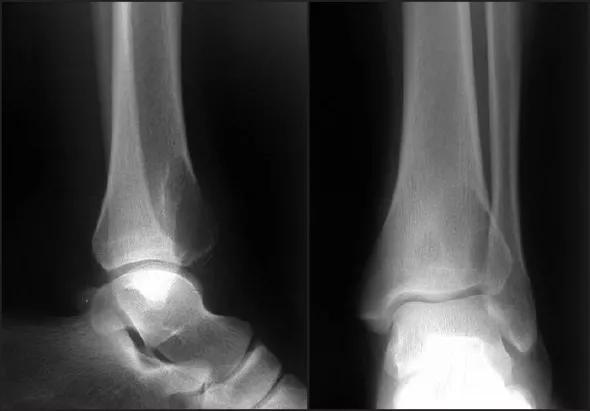
Figure 1. Radiographs from a case of giant cell tumor of bone showing sharp margination and a cookie cutter-type appearance.
Radiographs reveal a large radiolucent lesion, sometimes surrounded by a distinct margin of bone, that is frequently without a soft tissue mass and usually without a sclerotic margin. Cortical thinning, endosteal erosion and trabecularization, or bony septation, of the cavity are associated findings. CT or MRI can delineate the extent of involvement and bony margination. A chest radiograph or CT should be performed in all patients with giant cell tumor to rule out rare chest metastases.
Gross examination reveals soft, friable, reddish-brown neoplastic tissue with the consistency of a wet sponge. Some areas are gelatinous or fatty, while some are aneurysmal and cavitated. Histologic features include multinucleated giant cells, a proliferative stroma with vesiculated nuclei, areas of aneurysmal tissue, areas of necrosis, reactive peripheral bone and occasional mitotic figures.
The most concerning lesion to consider in the differential diagnosis is telangiectatic osteosarcoma, although telangiectatic osteosarcomas are usually more destructive and have higher T2-weighted signal on MRI. Chondroblastoma should be considered in younger patients with open physes. Whereas chondroblastomas have their epicenter in the epiphysis and most involve less than 50 percent of the epiphyseal width, giant cell tumors, in contrast, have their epicenter in the metaphysis and more commonly involve more than 50 percent of the epiphysis. Both giant cell tumors of bone and may have aneurysmal bone cyst-like areas.
According to reports by several groups, long-term results after giant cell tumor removal show a worse outcome with cementation when it is placed next to the articular cartilage. For this reason, many centers advocate placing bone graft adjacent to the articular cartilage with or without cement in the rest of the defect. For recurrent lesions or articular destruction, extensive joint reconstruction or joint replacement may be required.
H.C. is a 35-year-old woman who had a giant cell tumor of bone removed at an outside institution. She came to Cleveland Clinic for follow-up several years after that index surgery. She had noted a subtle increase in pain, and radiographs revealed lytic lesions in the distal tibia (Figure 2), so we obtained MRIs based on concerns about the degree of bone resorption in her distal tibia. The MRIs revealed what appeared to be a recurrence of her giant cell tumor with aneurysmal bone cyst components (Figure 2).
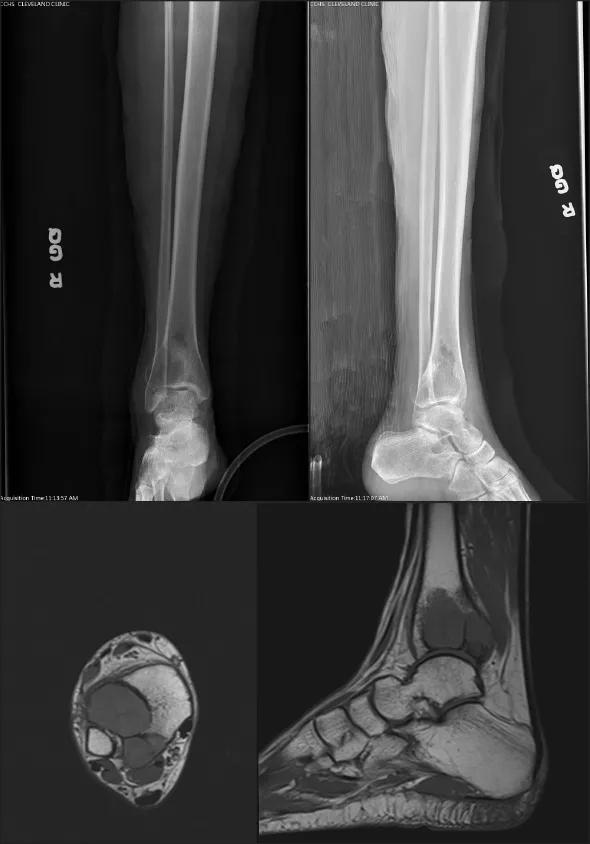
Figure 2. Radiographs and MRIs of the case patient H.C. after presentation several years after removal of a giant cell tumor of bone. The radiographs on the top reveal two lytic lesions within the lateral aspect of the distal tibia. The MRIs on the bottom show recurrence of her giant cell tumor with aneurysmal bone cyst components
She was taken to the operating room, where a frozen section confirmed the giant cell tumor recurrence. The tumor was curetted, phenol was placed on the edges of the bone in the area of the lesion, and demineralized cortical bone powder was added. She is now back on her feet after the surgery. This case underscores the need for follow-up after giant cell tumor curettage and illustrates some common aspects of the treatment of these aggressive but benign lesions.
Dr. Lietman, Co-Director of the Musculoskeletal Tumor Center, specializes in orthopaedic oncology and adult reconstruction
Dr. Joyce, Co-Director of the Musculoskeletal Tumor Center, specializes in trauma, oncology, total joint replacement and musculoskeletal tissue banking.

Biologic approaches, growing implants and more
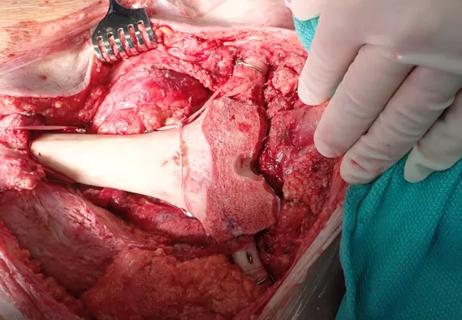
Complex chondrosarcoma cases pose challenges, utilize partnership
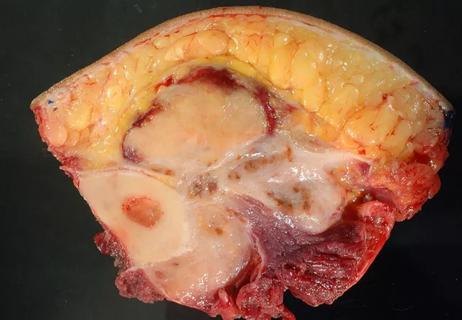
Why multidisciplinary surgical and cancer teams are essential
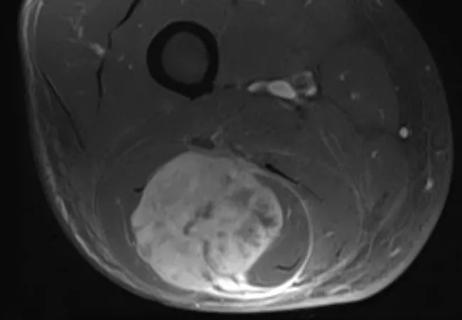
How to manage cases from early symptoms to referral: A guide for PCPs
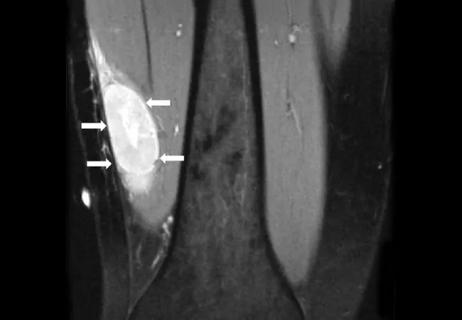
Two unusual sarcoma cases where necrosis develops in cortical versus medullary bone
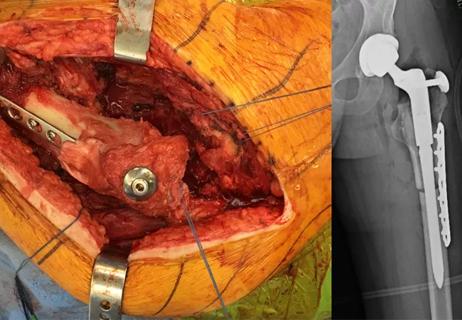
Sarcoma Program shows we’re better together

But their discovery still warrants vigilant follow up
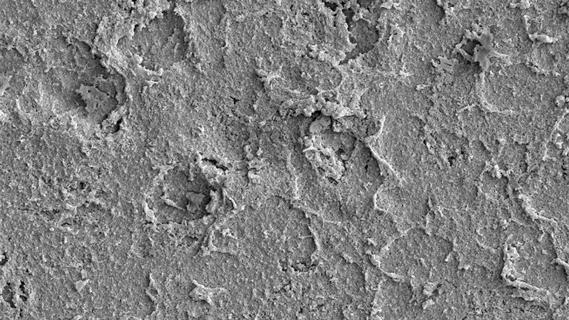
Researchers hope it may one day help patients avoid explantation surgery